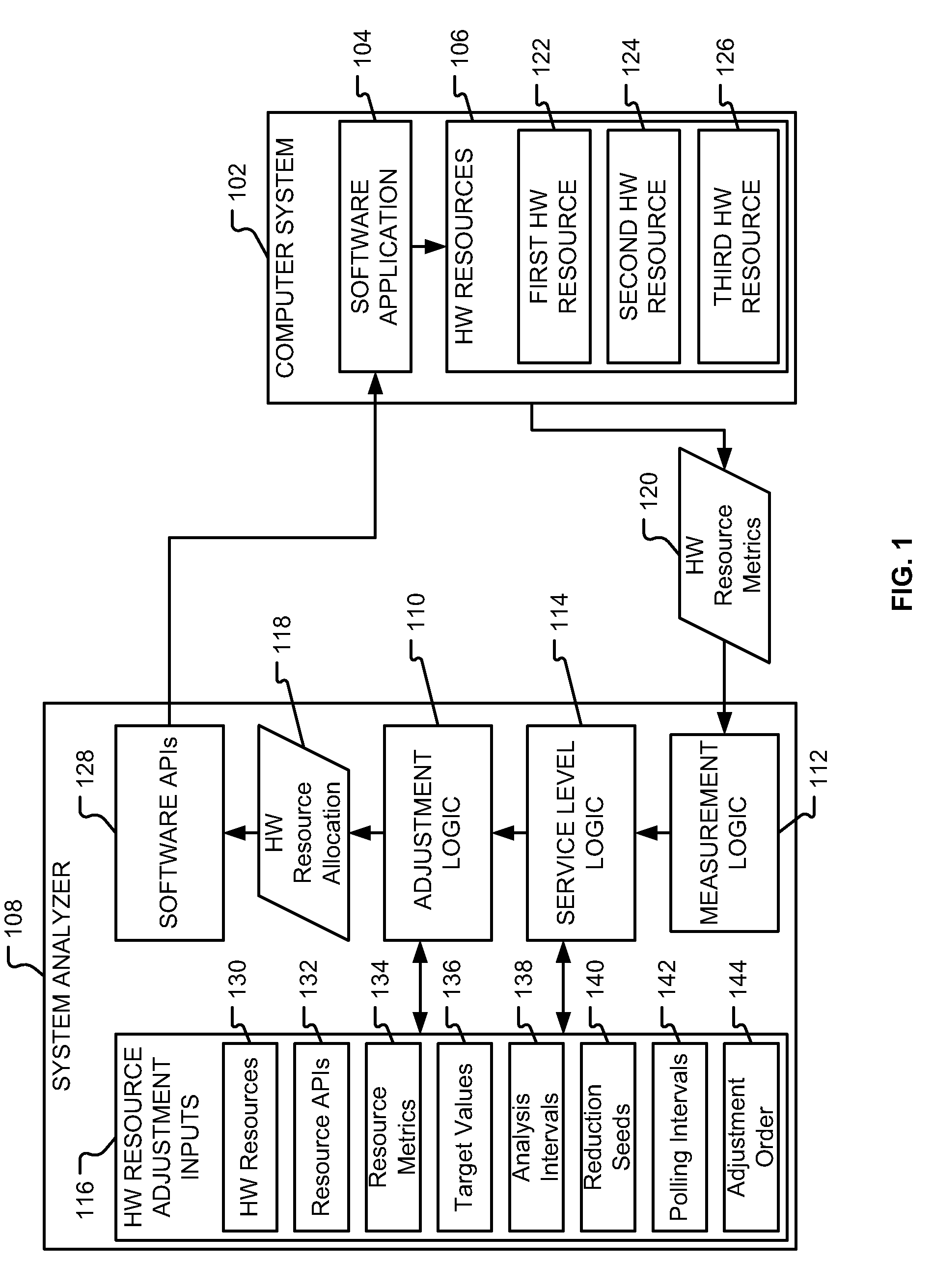Technique for conserving software application resources
a software application and resource technology, applied in the field of software application resources conservation, can solve the problems of difficult to estimate a specific amount of hardware resources, higher hardware and management costs, and higher energy consumption, and achieve the effects of reducing hardware resources allocated to support the running software application, and improving reliability and accuracy
- Summary
- Abstract
- Description
- Claims
- Application Information
AI Technical Summary
Benefits of technology
Problems solved by technology
Method used
Image
Examples
Embodiment Construction
[0011]The present disclosure presents an automated adaptive technique for reducing hardware resources allocated to support a running software application while supporting a desired application service level. The present disclosure relates to systems and methods of adaptive runtime adjustment of hardware resources supporting a running software application. One or more hardware resources supporting the running software application may be targeted for reduced allocation. Appropriate reduced allocations of the one or more hardware resources may be determined. By determing the appropriate reduced allocations and by re-allocating hardware resources accordingly, hardware and management costs and energy consumption may be reduced.
[0012]In a particular embodiment, a system is disclosed that includes adjustment logic to adjust an allocation of a first hardware resource to support a running software application. The system also includes measurement logic to measure at least one hardware resour...
PUM
 Login to View More
Login to View More Abstract
Description
Claims
Application Information
 Login to View More
Login to View More - R&D
- Intellectual Property
- Life Sciences
- Materials
- Tech Scout
- Unparalleled Data Quality
- Higher Quality Content
- 60% Fewer Hallucinations
Browse by: Latest US Patents, China's latest patents, Technical Efficacy Thesaurus, Application Domain, Technology Topic, Popular Technical Reports.
© 2025 PatSnap. All rights reserved.Legal|Privacy policy|Modern Slavery Act Transparency Statement|Sitemap|About US| Contact US: help@patsnap.com



